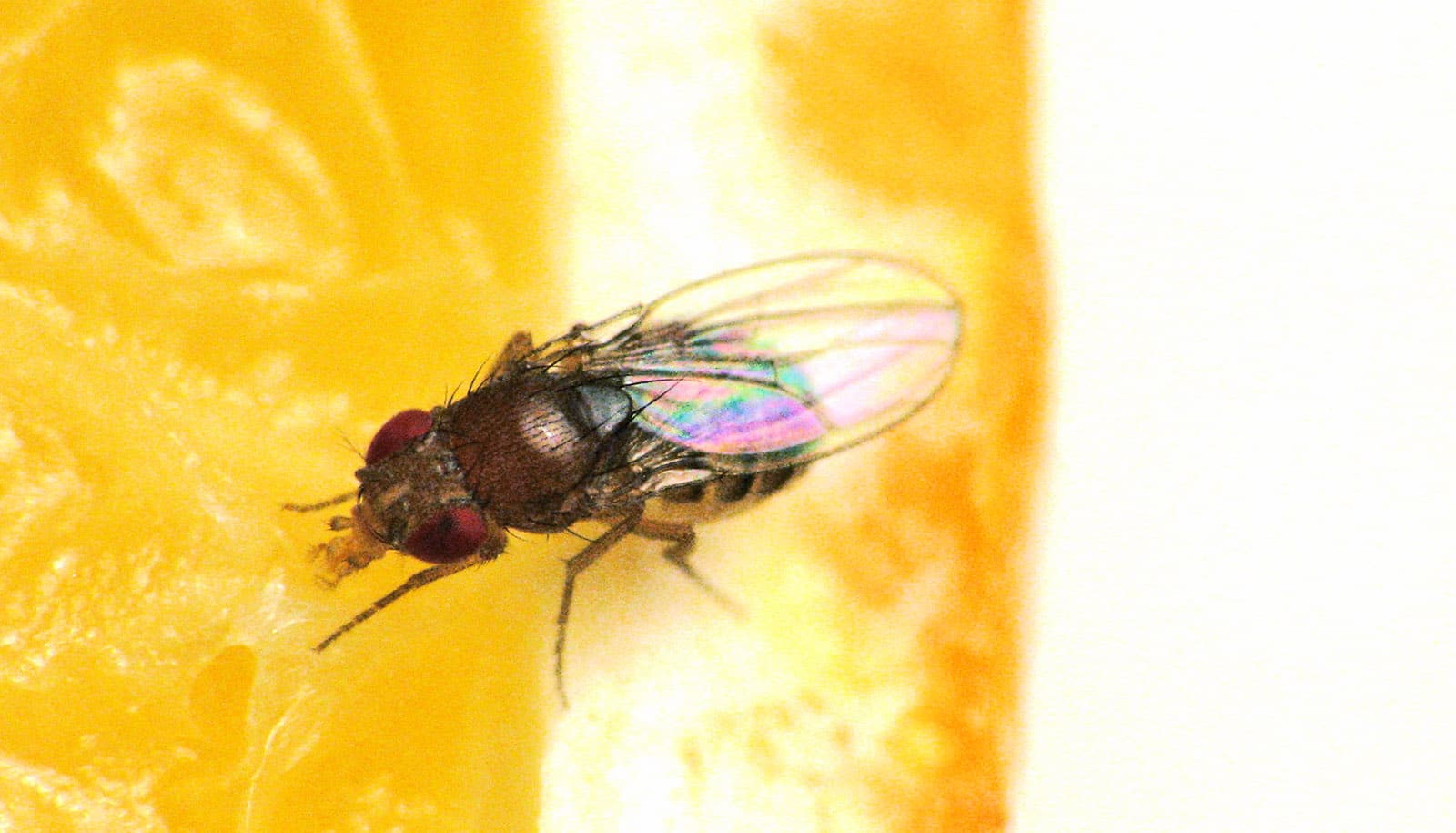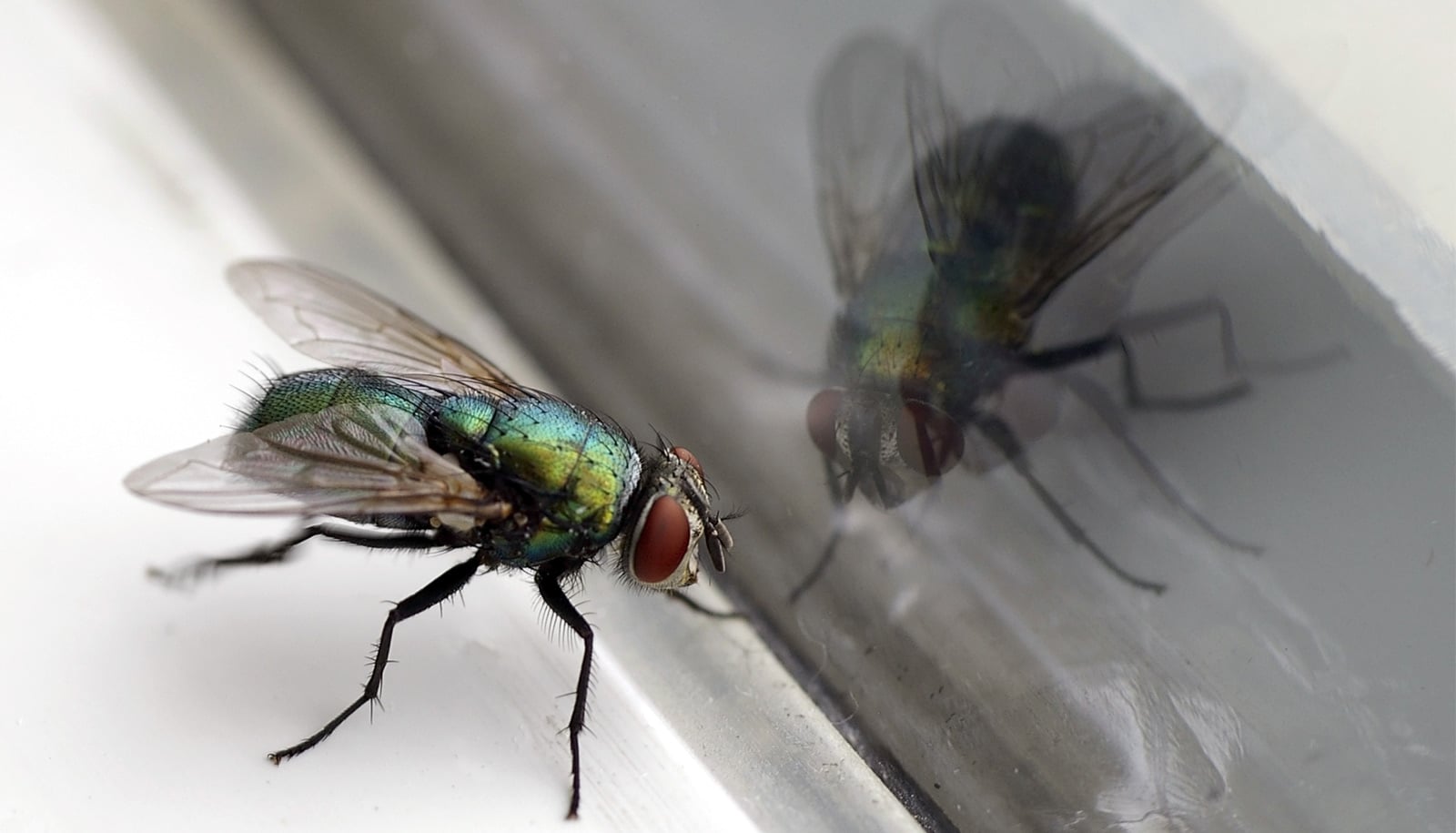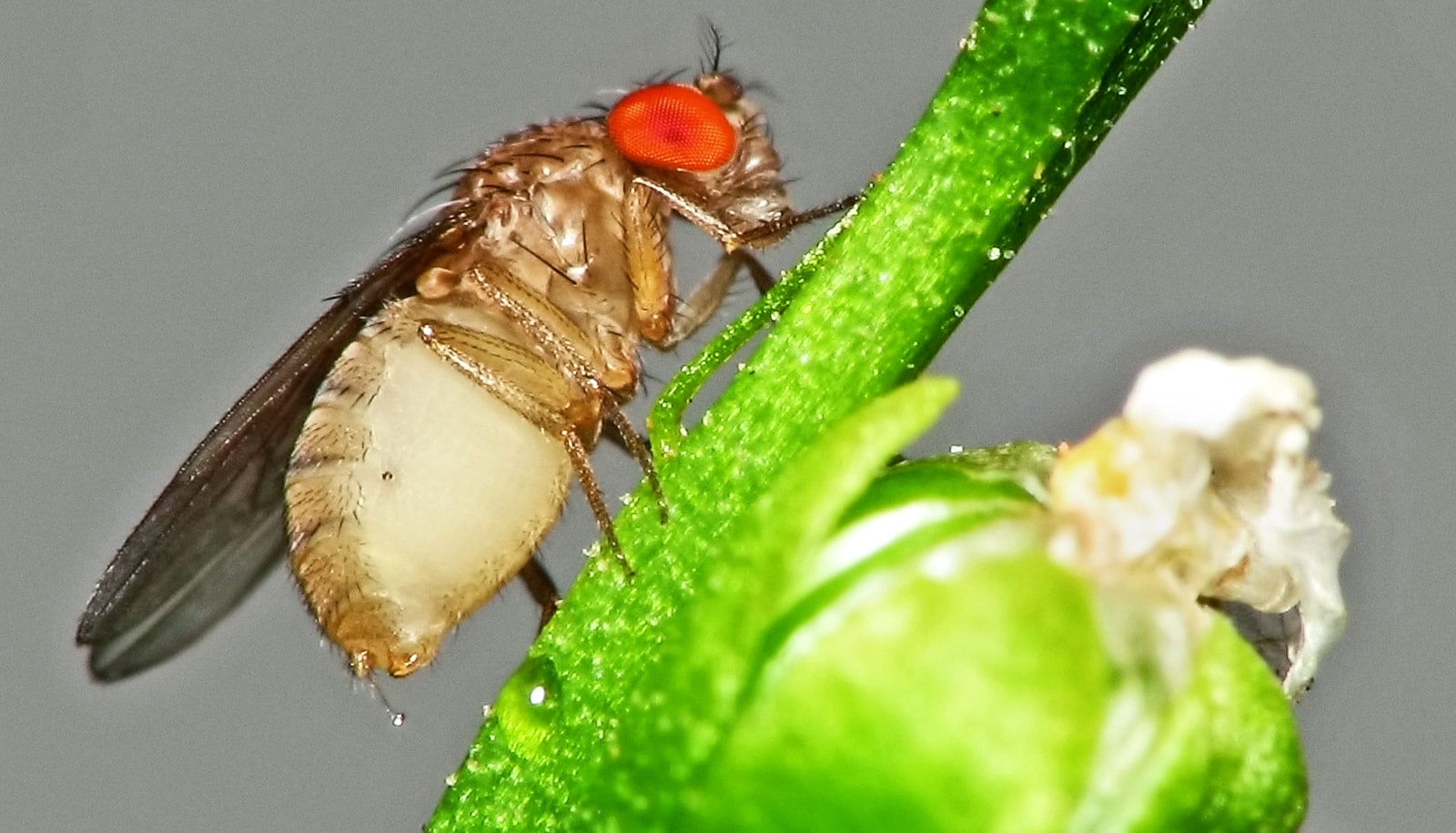A new imaging technique called trans-Tango(activity) reveals how specific neurons in brain circuits of fruit flies respond to stimuli such as sweet and bitter tastes.
“These results show that the way fly brains encode the taste of food is more complex than we had anticipated,” says study author Nathaniel Snell, who earned his PhD in neuroscience from Brown University in 2021 and conducted the research as part of his thesis.
Just as significant as the researchers’ findings is the method they used, says Gilad Barnea, a professor of neuroscience at Brown’s Warren Alpert Medical School and director of the Center for the Neurobiology of Cells and Circuits at the University’s Carney Institute for Brain Science.
The study appears in the journal Current Biology.
Sweet and bitter tastes
To learn more about the brain processes that govern the flies’ reaction to taste sensations, Barnea, Snell, and a group of graduate and undergraduate students in Barnea’s lab developed a new imaging technique called “trans-Tango(activity).” This is an adaptation of trans-Tango, a versatile technology invented by the Barnea lab that is used to trace neural circuits in the brain. Barnea says trans-Tango(activity) takes the understanding to a new level by revealing how specific neurons in the circuits respond to stimuli.
The brain response to stimuli is like a relay, Barnea explains: The “stick” passes from one neuron to the next, and then to the next, and so on. Previous techniques could identify a neuron with the stick, but not who gave the stick to that neuron.
“Trans-Tango(activity) allowed us to selectively look at the second-order neurons in the circuit, so we could focus on how they responded to sweet and bitter tastes,” Barnea says.
Because the reaction to sweet and bitter tastes is so different, the researchers’ expectation was that the neural activity along the circuits mediating those reactions would be entirely disparate as well, he says. But trans-Tango(activity) reveals some overlap of neural activity already in second-order neurons in these circuits in response to the two tastes.
Barnea says that some of the results may show how flies know to avoid a particular rotten, poisonous, or otherwise bad section of a food, for example. Overall, he says the study findings underscore the importance of the sophisticated and refined processes of taste.
“You have to remember that eating, or feeding, is an activity where you—whether you are a fly or a human—cannot make mistakes,” he says. “If you consume something bad for you, it can be detrimental. Anyone who has ever paid dearly after eating a bad mussel can confirm this. So the ability to know to avoid certain foods, or even certain areas or parts of food, is important for the survival of the species.”
No bitterness? Sweet!
One finding was especially intriguing to Barnea not because of what it said about survival, but what it potentially revealed about pleasure. The second-order neurons responded to bitter tastes not only when the tastes were presented, but also when they were removed. Surprisingly, Barnea and his colleagues found some overlap in activity when the bitter was removed and the sweet was presented.
Barnea says this reminded him of the concept of “aponia,” which in ancient Greek means “the absence of pain,” and was regarded by the Epicurean philosophers to be the height of pleasure.
“The fact that we see a neuron that responds both to the removal of the ‘bad’ stimulus—bitter taste—and to the presentation of the ‘good’ stimulus—sweet taste—is biologically reminiscent of this philosophical concept,” says Barnea, who adds that future research will further explore this response.
As to why insects’ sense of taste matters to humans, who may experience taste differently, Barnea refers to the insects who find humans particularly attractive: “Understanding what drives gustatory and olfactory behaviors in mosquitoes, for example, is very important in learning how to decrease their effect on humans,” he says. “Our study may add one small piece to that large puzzle.”
Pushing science forward
The study shows how a research question can provide impetus to develop a new scientific technique that can then be used to answer new research questions—and vice versa.
“We believe that trans-Tango(activity) can be a useful tool not only for studying how the sense of taste works, but for understanding neural circuits in general,” Snell says. “Sensory neurons encode many different kinds of information about the world, and figuring out how this information is relayed, transformed, or integrated as it travels from peripheral to deeper layers of a neural circuit is a central question in neuroscience. Trans-Tango(activity) is perfectly poised to be able to answer such questions.”
It took Barnea more than 20 years to develop trans-Tango to the point where it could be used successfully in fruit flies, he says, yet only five years for the team to develop and publish trans-Tango(activity)—and additional adaptations are currently in the works.
“The more we use the technology, the better it gets, and the more we can learn from it, and the more questions we can apply it to,” Barnea says.
Support for the research came from the National Institutes of Health and the National Science Foundation.
Source: Brown University



